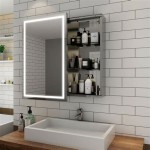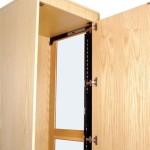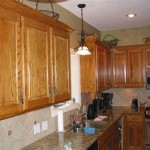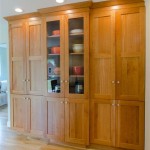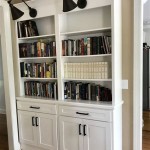Are you a homeowner looking to update your kitchen or bathroom cabinets? Cabinet refacing is a great option for anyone looking to add a modern touch without breaking the bank. DIY cabinet refacing is a relatively simple process that can save you a great deal of money and give you the satisfaction of doing it yourself. Here, we’ll cover the basics of cabinet refacing, including the materials and tools you’ll need, the steps involved, and some helpful tips along the way.
Cabinet refacing is the process of installing new doors, drawer fronts, and veneers on the existing cabinet boxes. The entire process is much cheaper and faster than replacing cabinets, and with the right materials and tools, it can be a great DIY project. To get started, you’ll need to purchase a few materials and tools, including new cabinet doors and drawer fronts, veneers, wood glue, clamps, screws, and a drill.
Once you have the materials and tools you need, it’s important to properly prepare your cabinets for refacing. This includes removing the old doors and drawer fronts, sanding down the existing surfaces, and cleaning the cabinet boxes. This will ensure that the new materials adhere properly and that you have a smooth, even surface. Once the preparation is complete, you can start the actual refacing process.
The first step in cabinet refacing is to attach the new veneer to the cabinet boxes. Use wood glue to adhere the veneer and then clamp it down to ensure it stays in place. Once the veneer is attached, you can start attaching the new doors and drawer fronts. Use a drill to secure the new hardware to the cabinet boxes. Be sure to use the right size screws and to apply the right amount of pressure when drilling.
The next step is to sand down the new doors and drawer fronts to ensure they are even with the cabinet boxes and the veneer. Use a fine-grit sandpaper to get the job done. Once the sanding is complete, you can apply a coat of paint or stain to the doors and drawer fronts. This will give the cabinets an updated look and will protect them from wear and tear.
Finally, you can add the hardware such as knobs and handles to the cabinet doors and drawer fronts. This is an easy step and will give your cabinets the perfect finishing touch. Once the hardware is in place, you can admire your handiwork and enjoy your newly refaced cabinets.
Cabinet refacing is a great DIY project that can save you a great deal of money. With the right materials and tools, you can completely transform the look of your kitchen or bathroom cabinets. And best of all, it’s a relatively simple process that anyone can do with a little bit of patience and know-how.










Related Posts




